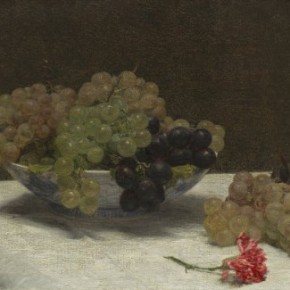
Henri Fantin-Latour – Baked Cheesecake with Sugared Grapes
Although Henri Fantin-Latour was predominantly known for his still life floral paintings, he did paint a number of works featuring fruit including Still Life with Grapes and a Carnation (c.1880), pictured above. The painting is completed in his typical style with the sombre palette influenced by Jean-Siméon Chardin. His deft skill in arrangement is evident...
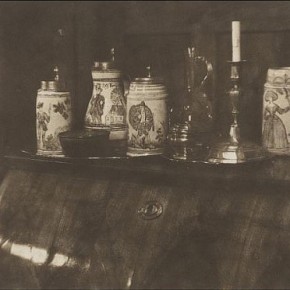
Heinrich Kühn – (Biersuppe) Beer Soup
In the last few weeks of September and the first few of October, the city of Munich holds a festival called Oktoberfest. The calendar is adjusted each year so that the festival will end on the first Sunday of October and this year is the 200th jubilee of the event. Revellers gather and enjoy hearty...
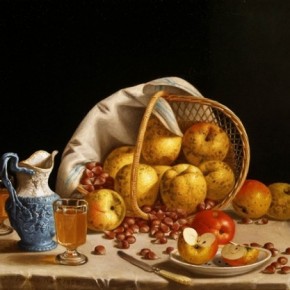
John Francis – Honey-Wine Apple Galette
The mix of ordered fruit and a rustic, haphazard crust encapsulates the French term, galette. Typically, the crust is made with plenty of butter so when it is baked, it becomes flaky and extra crusty. In France, a galette can be made either sweet or savoury with ham, eggs and cheese, otherwise known as a...
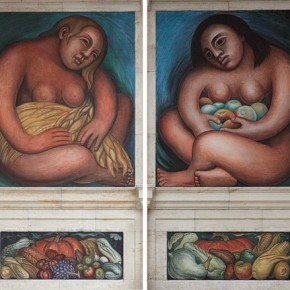
Diego Rivera – Stacked Tortilla Torta
The Detroit Industry murals were completed by Diego Rivera in the early 1930s. The twenty-seven panels range in size from 518 x 1,370 cm to 60 x 182 cm and completely surround the viewer in the courtyard. The murals were created as a tribute to the industry and labour in Detroit. The East Wall (1932-33)...
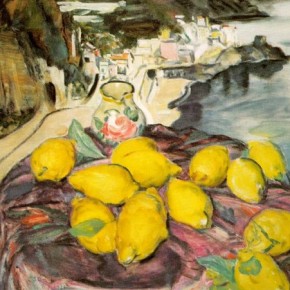
István Csók – Ravioli Caprese
Classified as a filled pasta, ravioli dates back to the 14th century from the writings of Francesco di Marco (1). The word ravioli is similar to the Italian verb ‘to wrap’, riavvolgere, although it is not a derivative. Traditionally, pasta dough is rolled out as thinly as possible and then wrapped around a filling. Italian-Americans...
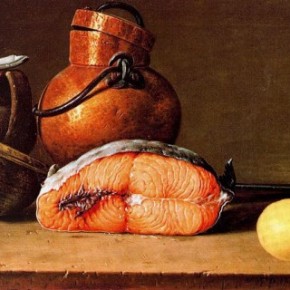
Luis Meléndez – Baked Salmon with a Dijon-Tarragon Crust
Luis Meléndez is known for a series of still life paintings that were painted during a twenty year period at the end of his life. Piece of Salmon, Lemon and three Vessels (1772) was completed in the later half of this twenty year span and exemplifies his attention to detail derived from an early career...
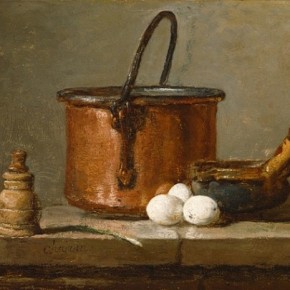
Jean-Siméon Chardin – Leek & Gruyère Soufflé
The fluffy egg cake known as a soufflé can be made both sweet and savoury depending on the flavourings incorporated. In French, the word soufflé is the past participle of the verb souffler that translates to ‘to blow up’ – exactly what a soufflé does when it bakes. The method of creation is related to...
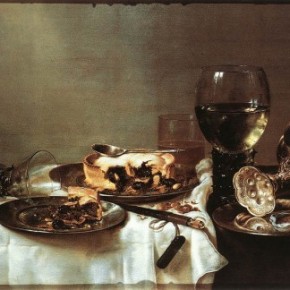
Willem Claesz Heda – Plum & Blackberry Streusel Pie
As one of the earliest still life painters of the Dutch Golden Age, Willem Claesz Heda is known for his little breakfast scenes called ontbijtjes. Heda’s paintings are dramatically lit with a multitude of reflective trinkets, glasses and bowls. The table, laden with objects, is divided by the white tablecloth with a knife and a...
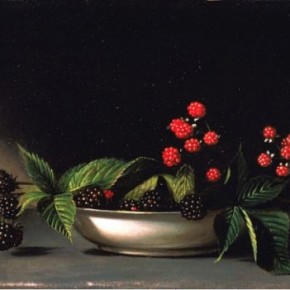
Raphaelle Peale – Part 1 – Wild Blackberry & Honey Frozen Yogurt
Raphaelle Peale exhibited Blackberries (c.1813) twice at the Pennsylvania Academy of the Fine Arts, first in 1814 and then again in 1817. The small painting depicts both ripe and unripe berries in a small shallow bowl. The subject matter is typical for work by Peale who was fond of balancing his still life compositions with...
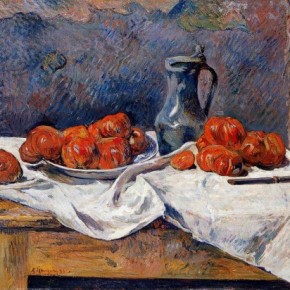
Paul Gauguin – Tomato Tarte Tatin
Paul Gauguin painted Nature morte aux tomates (1883) the year he quit working at the stock exchange and devoted his career to art. The work from this period is closely related to Impressionism – he later broke away from the movement by simplifying his painting and focusing on shape and bold blocks of colour. In...
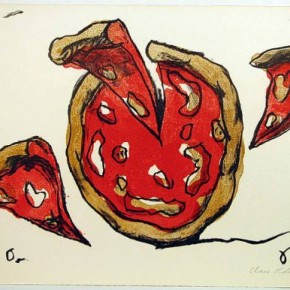
Claes Oldenburg – Wood-Fired Pizza
The Swedish-born artist Claes Oldenburg is known for his sculptures of everyday objects ranging from spoons to hamburgers. The public works are often interactive and were initially scorned before being embraced for their playfulness. In addition to the colossal sized sculptures, the objects also appear in soft-form and were originally sewn together by Oldenburg’s ex-wife....
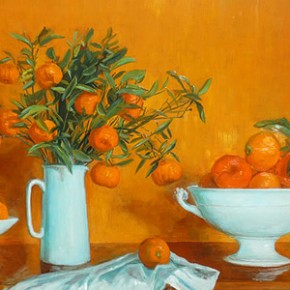
Margaret Olley – Orange Grapefruit Marmalade
On August 5th, the exhibition Slow Burn – A century of Australian women artists from a private collection, will open at the S.H. Ervin Gallery. I have spent the past four months working very hard on the exhibition catalogue and am very proud to be a co-author on such an exciting and important project. Of...
